Table of Contents

Basa fish is one of the Asian fish that gained a good reputation recently thanks to its rich nutritional composition.
However, some researches have concluded very bad farming procedures which made some people afraid of consuming this fish.
In this article, we gathered all the information you need to know about basa fish nutritional values, health benefits and side effects, alongside tips on how to buy + cook + store it.
But first, let’s clear up some missconceptions…
The difference between pangasius and basa fish:

Basa fish:
Compared to pangasius, the basa fish has a shorter head with a tiny hole in its skull bones.
As for the teeth, basa fish have slightly large upper-jaw teeth and their mouth is slightly shifted to one side.
Basa fish has a short-flattened body with a huge white belly that fades to light brown towards the spine.
Once you cut a basa fish you’ll notice 2 fat sacs that are milky white almost like rice water.
In the market, basa fish is usually more expensive than pangasius as it costs around 7$ per pound, unlike pangasius which costs around 4$.
Pangasius:
First, the head of pangasius has a slightly concave skull and is larger than that of the basa.
The antennas aka mustaches of the pangasius fish come in equal size which is not the case for a basa fish.
Also, the teeth of the pangasius are small and do not point forward.
As for the body, the pangasius has an oval shape with a small belly and a silver side that fades to dark green on the side dorsal.
The fins are short and have a distinguishing pale pink color.
Moreover, when you cut a pangasius fish you’ll notice that it has a yellowish fat unlike the white fat like the one in basa.
Basa fish nutritional values and health benefits:

Nutritional value:
This fish is loaded with unsaturated fatty acids with a very minimal amount of cholesterol.
In other words, basa fish does not cause weight gain and is not harmful to the cardiovascular system.
Also, basa offers a good amount of Iron with more than 7% of the daily needs per serving.
That Iron content can be a great boost to ensure the daily requirements, especially for women who are suffering from Iron deficiency.
Basa fish is also a good source of collagen and many products are already using collagen extracted from the skin of basa fish.
These data counts for the serving size of basa fish (steak or fillet) which is 4-5 ounces (124g):
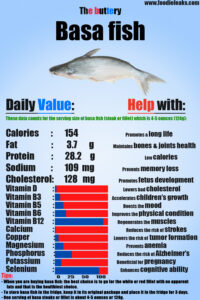
- Calories: 154
- Fat: 3.7g
- Protein: 28.2g
- Sodium: 109 mg
- Cholesterol: 128 mg
- A vitamin : 3%
- B1 vitamin: 10%
- B3 vitamin: 16%
- B6 vitamin: 21%
- B12 vitamin: 91%
- Calcium : 2%
- Iron: 7%
- Magnesium: 16%
- Phosphorus: 32%
- Potassium : 12%
- Selenium : 83%
Health benefits:
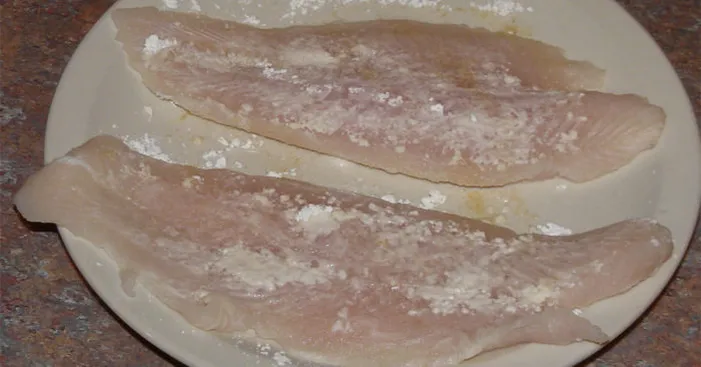
Basa fish is a lean fish and that means it offers high-quality protein while having a low caloric intake.
Thanks to that, these fish have a lot of health virtues among which we mention:
Promotes a long healthy life:
Studies show that people who consume fish at least once a week live longer than those who don’t.
In one study, people who eat fish often had a two years increase in their biological age compared to people who don’t eat fish.
This is probably thanks to the good amount of omega-3 fatty acids which have many impacts on the well-being of all body cells.
Therefore, eating basa fish once a week will help you live a long and healthy life.
Maintains bones health:
Thanks to its great content of calcium, basa fish can help you maintain bone density.
In addition, this fish contains other trace elements that make it easy for the body to absorb calcium.
These trace elements can also develop the bones while maintaining their tenacity and density.
The nutrients in this fish can also reduce swelling and relieve the pain caused by joint issues.
Low in calories:
This fish is very helpful for people on a pescatarian diet and those who are on a mission to reduce their body weight.
Even if you turn on plant-based proteins, it is still hard to find a good source of protein without dealing with a lot of fats and calories.
This is where basa fish comes in handy, it offers more than 40% of the daily needs protein for an average person.
The good news is that this fish offers that much protein with less than 10% of the total daily caloric intake for a 2000 calories diet.
For instance, a serving of 150g of basa fish offers about 180 which is very low.
Getting that much protein from this fish will make you feel full for a longer period which will help you burn fats.
Prevents memory loss :
Basa fish have a good effect on the brain thanks to the quality of protein, omega 3, hydrochloride, choline, phospholipids, and other substances.
In fact, those micro-nutrients act directly on the brain nerves and stimulate them to enhance cognitive ability and memory capabilities.
By receiving enough nutrients, the brain will be able to sustain optimal functioning which can be very beneficial, especially for the elderly.
Promotes fetus development:
Pregnant women need a good supply of DHA content (Docosahexaenoic acid) essential for the growth of the fetus.
Luckily, basa fish offers a good amount of omega-3 fatty acids which provides all the DHA a pregnant woman needs.
By getting enough DHA from basa fish the fetus will:
Be healthy in the womb.
Have a healthy development.
Other health benefits of basa fish:
- Reduces the amount of bad cholesterol in the body.
- Accelerates children’s growth.
- Improves the physical condition.
- Restores and regenerates muscle tissues.
- Reduces the risk of vascular blockages.
Precautions before you consume basa fish:

The thing about seafood is their habitat, with nowadays pollution there’s almost no way you can find 100% saint water.
Because of that pollution, almost all fish are exposed to heavy metals through the water they live in.
This is also the case for basa fish with some research finding traces of mercury and PCBs in their meat.
However, these harmful components are found in small quantities within a safe range for moderate consumption.
In addition, the way basa fish is raised can also play a huge role in the degree of contamination.
For instance, some fish farmers have to use pesticides to kill parasites in their fish ponds but that could infect the fish themselves.
In fact, some Asian fish do not meet international safety due to the farming practices used in those regions.
To minimize the risk of consuming contaminated basa fish make sure to cook it properly and avoid consuming it undercooked.
Consuming basa fish:
Steamed basa:

Ingredients:
- 2 basa fillets.
- 1 tbsp of olive oil.
- Salt and pepper for seasoning.
Preparation:
- Start by washing the basa fillets then place them on a piece of cloth so they dry out.
- Once they’re dry, sprinkle black pepper and salt evenly on both sides of the fillets.
- Drizzle the olive oil on both sides of the fillet and spread it using a spoon.
- Place the seasoned fillet pieces in a steamer or just follow our next steps in you don’t have one.
- Get a deep pot and fill it halfway with water then bring the water to boil.
- Now use your kitchen colander by placing it on top of the boiling water pot, put the basa fillet in the colander and make sure you cover it well.
- Let the fish pieces get steamed until they are throughout cooked, it shall take about 10 minutes on a steamer and 20 minutes using the colander technic.
- Serve the dish and enjoy it with your loved one!
Basa fish with mushrooms:
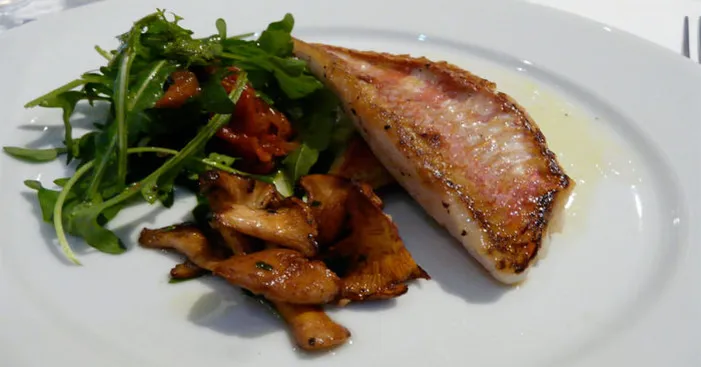
Ingredients:
- 2 basa fish steaks.
- 1 cup of cremini mushrooms (88g).
- 2 tbsp of soy sauce.
- 3 tbsp of water.
- 2 tbsp of olive oil.
Preparation:
- Start by washing the mushrooms then break them into small pieces using your bare hands.
- In a frying pan, sautée the mushroom piece with olive oil until they become soft.
- Add water and soy sauce, cover the pan and let it cook on medium heat 150°F (70°C) until it starts boiling.
- Using a spoon, make room for the basa steaks then add them in the middle and cover the pot again.
- After minutes, the lower side of the steaks turns white so go ahead and turn them over then cover the pan again and let it cook for 3 more minutes.
- That’s it, serve the steak sided with the soy and mushroom sauce and enjoy it!
Fried basa steaks with breadcrumbs:

Ingredients:
- 3 basa fillets.
- 1 cup of breadcrumbs.
- 1 cup of chopped lemongrass.
- 2 tbsp of paprika.
- 1 tbsp of salt.
- 3 tbsp of olive oil.
Preparation:
- Wash the basa fillets with water and salt then let them dry on a piece of cloth.
- In a small bowl, mix ½ cup of chopped lemongrass with paprika, salt, and 1 tbsp of olive oil.
- Marinate the fillet pieces in the lemongrass mix thoroughly then let it marinate for 10 minutes to absorb the spices.
- Now roll the marinated basa fillets on breadcrumbs until they are fully covered with a thin layer.
- Heat 2 tbsp of olive oil in a frying pan, then start frying the marinated fillets for 4 minutes on each side until they become golden.
- Once the fillets are done, take them out and sautee the remaining ½ of lemongrass in the same pan until it becomes soft and yellow.
- Serve the golden fried basa fillet on a dish sided with lemongrass and a pinch of salt and paprika!
Buying basa fish:
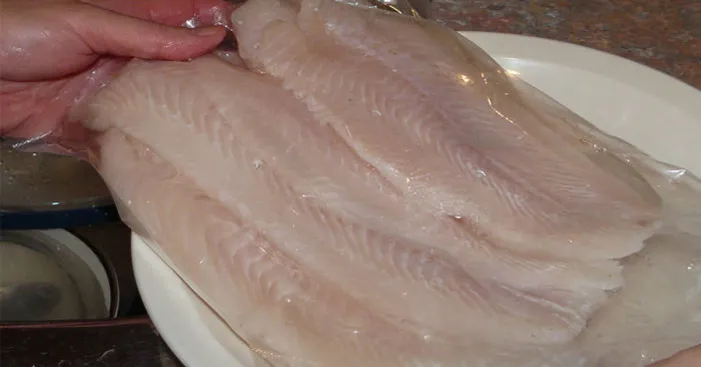
Once you decide to try basa fish AKA “Pangasius bocourti”, you will need to know how to buy the best quality you can find in the market.
To do that, there few easy tips you can use:
A good quality basa fish must have an elastic texture, you can simply apply a little pressure on the fish meat and it should restore to its original state.
The color of a fresh basa fish can be white, red, orange, or yellow with different levels of fats.
The best choice is to go for the white or red fillet with no apparent fats and that is the healthiest choice.
Avoid basa fish fillets with a yellow shade as it indicates that the fish was raised with a lack of nutrients.
Storing basa fish:
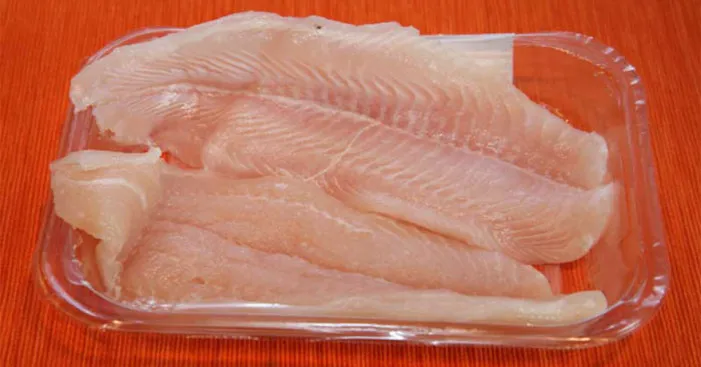
Newly caught basa fish must be consumed within 4 hours if you’re not planning on storing them.
Nonetheless, the good thing is that you can store this fish in the fridge to use within a few days or freeze it to keep it for months.
To store basa fish in the fridge, keep it in its original package and place it in the fridge for 3 days.
However, only open the package when you are going to cook it as you can’t store it back once it’s open.
To keep basa fish for a longer time, you can freeze it for up to 3 months in its original package or a freezing bag.
The best way to thaw frozen basa fish fillets is by placing them in the fridge overnight or to thaw it in water.
You can’t store this fish after you thaw it so make sure you only take out the quantity that you’re going to cook and leave the rest frozen.
